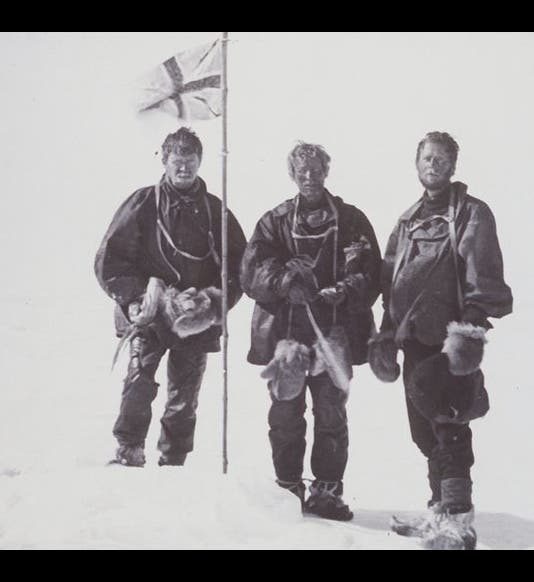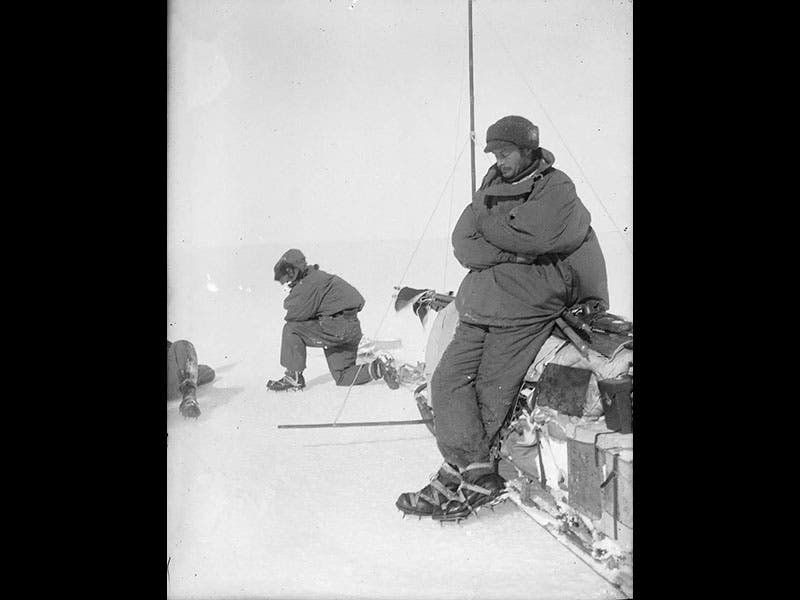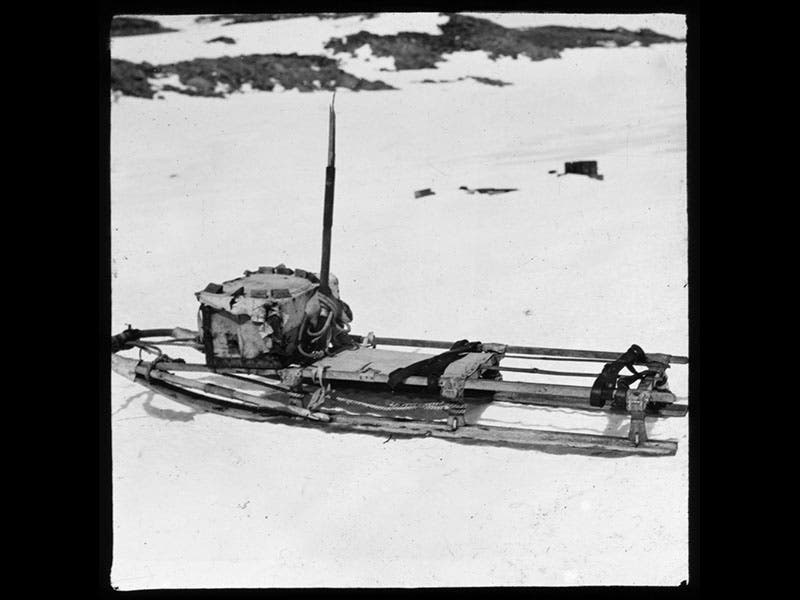Scientist of the Day - Douglas Mawson
Douglas Mawson, Australian explorer of Antarctica, was born May 5, 1882. Mawson is to Australia what Shackleton is to Great Britain, a national hero of the so-called Heroic Age of polar exploration. Mawson was a member of Shackleton's Nimrod expedition to Antarctica, 1907-09, during which he was in a party that was the first to reach the South Magnetic Pole. The photo shows Mawson (right), Edgeworth David (center), and Alistair Mackay (left) planting the flag (first image). The same trio had earlier become the first to climb Mt. Erebus, an Antarctic volcano near MacMurdo Sound in Antarctica that had been discovered by James Clark Ross (and named after his ship) in 1841. Interestingly, Ross had been the first to plant the flag over the North Magnetic Pole in 1831.
In 1911-14, Mawson led his own Australasian Antarctic Expedition, which explored the area known as George V Land, on the part of Antarctica that is due south of Australia. A phot above shows Marson leaning on a sledge (second image). The base camp was at Commonwealth Bay, now confirmed as the windiest place on earth, with average winds of 50 mph and regular gusting to 200 mph. In a famous photo, taken by Frank Hurley of later Endurance fame, a member of Mawson’s crew leans into a 100-mph wind as he wields his ice-axe (third image). Near the end of their planned stay, Mawson and two others left on a sledge expedition, and one of his team fell through a crevasse with most of the supplies, 300 miles from base, and died. The return was arduous, and the other team member died on the way back. Mawson survived, hauling a half-sledge that he had cut in two with a pen-knife (fourth image), but he arrived back at base just after the pick-up ship had departed. He (and the six men left behind to search for him) had to wait through another southern winter before the ship could return to retrieve them.
Mawson spent the rest of his life as a professor of geology at the University of Adelaide, where is commemorated by a portrait bust (fifth image).
Dr. William B. Ashworth, Jr., Consultant for the History of Science, Linda Hall Library and Associate Professor, Department of History, University of Missouri-Kansas City. Comments or corrections are welcome; please direct to ashworthw@umkc.edu.











